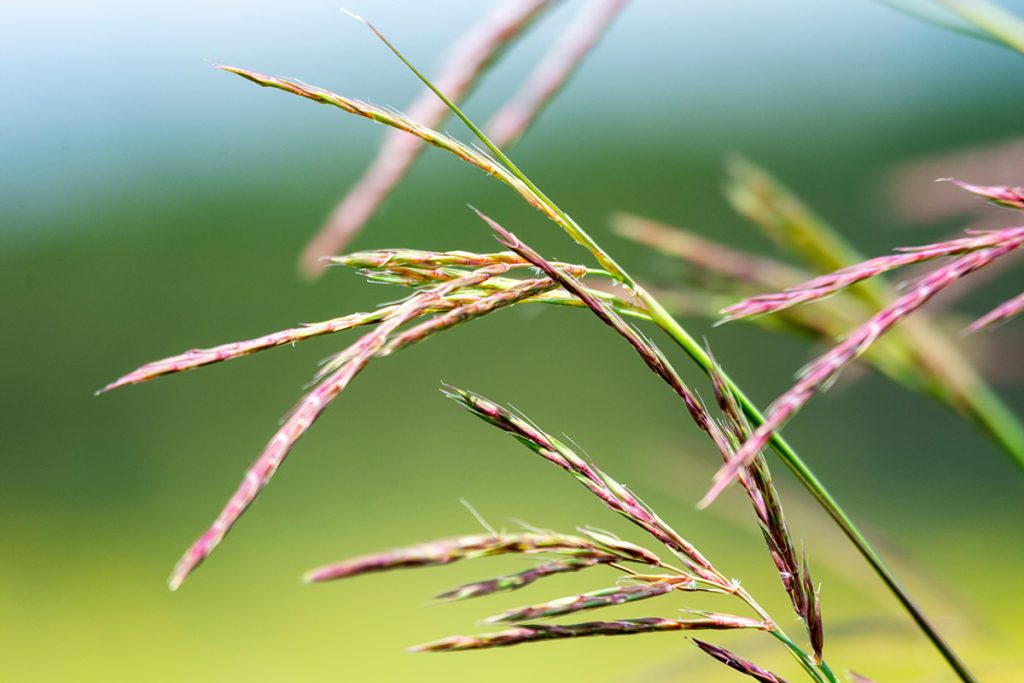
Establishing native grasses for your Conservation Reserve Program (CRP) project is an efficient way to bring many conservation benefits to your land. In general, native grasses are affordable and easy to maintain. Plus, they can improve your soil health, reduce erosion, enhance water quality, and provide vital wildlife habitat.
But with the wide variety of different grass species, it can be challenging to choose the right plant for your CRP project. Not all grass species are created equal, and some species will work better for your specific conservation practice than others. In this post, we’ll examine some of the most common grasses used for CRP to help you select the right species for your land.
Switchgrass
A perennial warm-season grass, switchgrass can be found throughout North America, often in grass pastures, prairie, and along roadsides. With its strong, deep roots, it can store ample nutrients and water in the soil to produce high yields.
Switchgrass is also highly adaptable and resilient and can be grown on many different types of soil. In addition to its conservation benefits, switchgrass is emerging as a promising biomass feedstock for bioenergy production. Ideal for applications like biochar and biofuel, it could eventually be a strong supplement to corn ethanol as a primary feedstock used for creating biofuel.
Canada Wildrye
Similar to switchgrass, Canada wildrye is a perennial bunchgrass, but thrives in cool-season climates, between 65 to 75 degrees. It can be naturally found throughout most of the country, particularly on plains, woodlands, and savannas.
Capable of growing between 2.5 to 6 feet tall, it provides grazing, foraging, habitat, and cover for many different wildlife species. It is especially suitable for erosion control, due to its quick seeding and establishment process.
Sideoats Grama
Easily recognizable with its oat-like clusters, sideoats grama is a key range grass species found all across the US. The plant and its nutritious stem clusters can provide a healthy, stable source of food for both livestock and wildlife, even during the winter.
In addition to its conservation benefits, sideoats grama can be used to attract game to your property for hunting purposes or to boost local wildlife populations. Plus, its thick clusters and deep roots help stabilize the soil and prevent erosion.
Big Bluestem
As suggested by its name, big bluestem is a warm-season bunchgrass, able to grow up to 8 feet in height and is the most prominent tallgrass in the US plains. But it’s not just tall above ground – its roots can penetrate the earth 10 feet deep. Strong and stable, it is also commonly referred to as “turkeyfoot” due to its distinct split tip seed head. Its deep roots allow for excellent erosion control, while its thick cover provides protection and habitat for local wildlife.
But despite its durability once it has fully grown, big bluestem seedlings can be easily conquered by the competition. Because of this, weed control methods like herbicide application and strategic mowing during the establishment process are crucial.
Get help selecting the right grass for your CRP project
Although the grasses listed above are all commonly grown for CRP, there are plenty of other options you can choose for your project, like prairie junegrass and indiangrass. The right grass species will depend on your contract requirements, your region, the CRP practice you are enrolled in, and other factors.
Not sure which type of grass will work best on your land? At All Native Seed, our CRP experts can help you determine which species is right for you. We can also provide high-quality CRP seed mixes including the grass species that will best meet your project needs. Through our sister company, FDCE, we can even assist with grass establishment, documentation, and herbicide application. Contact us today to learn more about how we can help with your CRP project.
